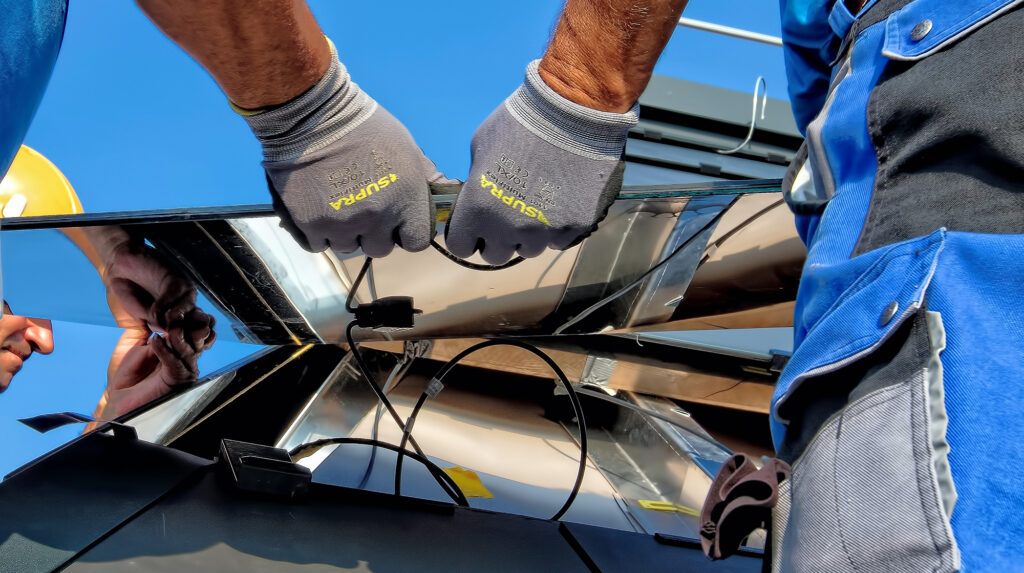A Deep Dive Into Home Solar Systems
To understand how solar panels work, let’s look at the process by which sunlight is converted into energy to power your home, appliances, and the grid. We can outline the process in five basic phases, beginning with the principles of the panels themselves:
Photovoltaic Cells
Solar panels are comprised of individual units called photovoltaic cells (PV cells). Typically, PV cells are made of silicon, a common semiconductor material that can absorb particles of light (photons) and convert them into electricity.
When photons reach the surface of the PV cell, the energy is transferred to the electrons of atoms within in the silicon. These electrons are able to escape their bonds with their parent atoms, which generates electric currents. This is known as the photovoltaic effect.
Put simply: sunlight energy makes the electrons in silicon excited.
Movement of Electrons
The silicon in the PV cells has a specific energy band gap. Electrons with enough energy from the photons of light move into this band, which allows them to move freely through the semi-conductive material. Electrons that break free from their typical positions within atoms is what creates electron-hole pairs.
The panels are designed in a way that creates an electrical field; driving the electron pairs a certain direction which creates an electrical current.
Put simply: the excited electrons start to move directionally within the solar panels.
The electric field then separates these charge carriers, directing electrons towards the n-type region and holes towards the p-type region.
Generating Direct Current (DC)
The electric current created from the electrons begins in the form of direct current. However, most of the appliances we enjoy in our homes, and the electricity grid from which we pull power, operate on alternating current (AC).
Creating Electric Compatibility
To create usable energy from the newly created direct current, an inverter is used to convert DC electricity to AC power, which can be fed into our homes directly from the panels, or from the panels back into the main power grid.
By regularly adjusting the direction of the panel, we can ensure optimal performance of each panel, greatly increasing the amount of energy created. This is referred to as “Maximum Power Point Tracking” (MPPT). This technique is also applied to other energy resources like wind and thermal energy creation.
Put simply: we can get more energy by pointing the panels directly at the sun.
Supplying Our Home...
The newly converted AC electricity can be used to power our homes, run appliances, fill home battery systems, and stay energy independent by relying less on the grid.
… Or Supplying the Grid
Alternatively, the AC electricity created from our panels can be fed back into the main power grid. Often, this surplus of energy created by your home system can be sold back to the energy company in the form of cash payments or energy credits via net metering programs, which can offer another economic advantage to installing solar panels at home.
Find out more about Virginia’s net metering program by requesting a quote today.
Summary
Solar panels work by converting sunlight into electricity through the photovoltaic effect. This process involves the absorption of photons by semiconductor materials, the detachment of electrons from their host atoms, and the generation of an electric current in the panels.
The electricity produced can be used on-site, stored in home batteries, or fed back into the grid, contributing to energy independence and sustainability.


